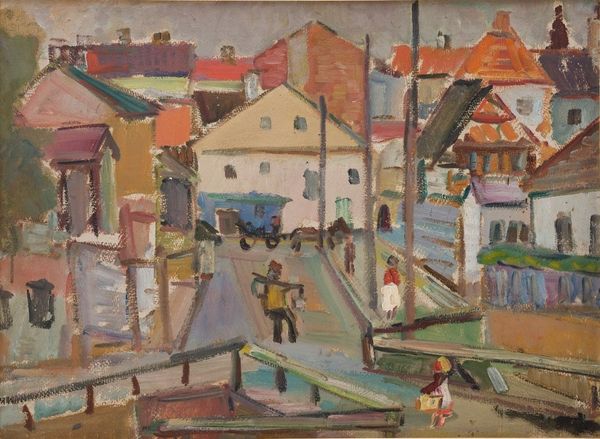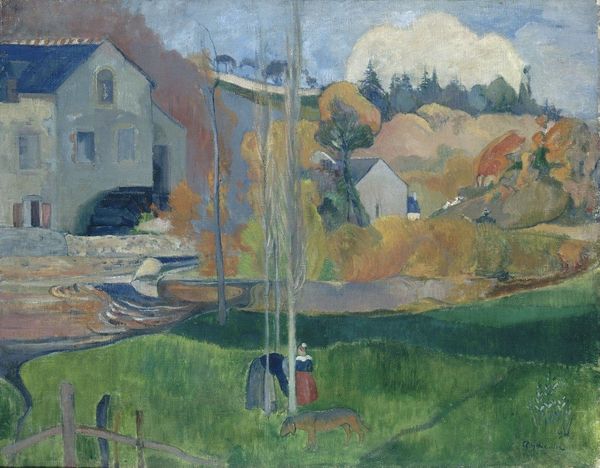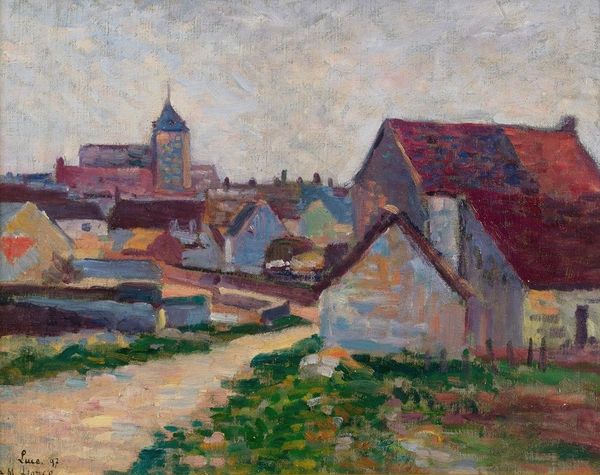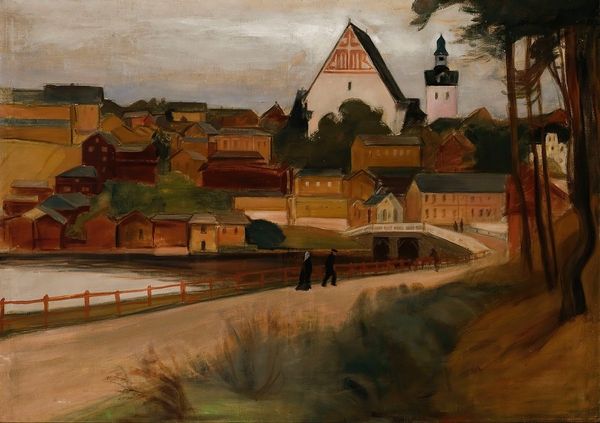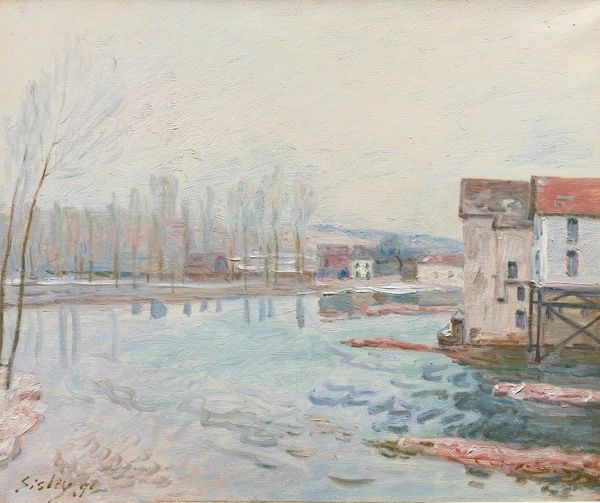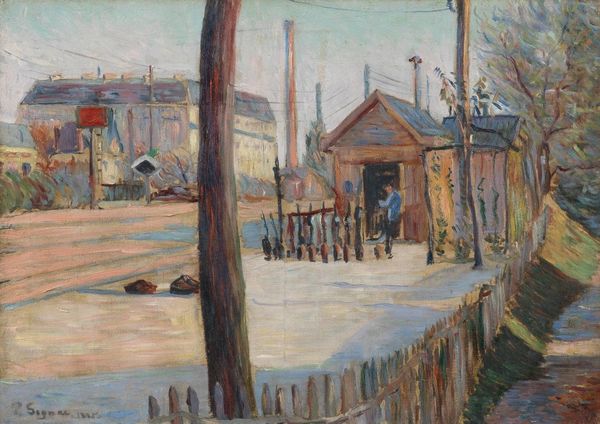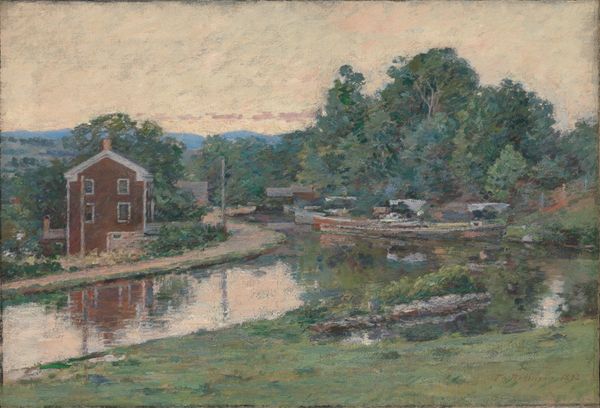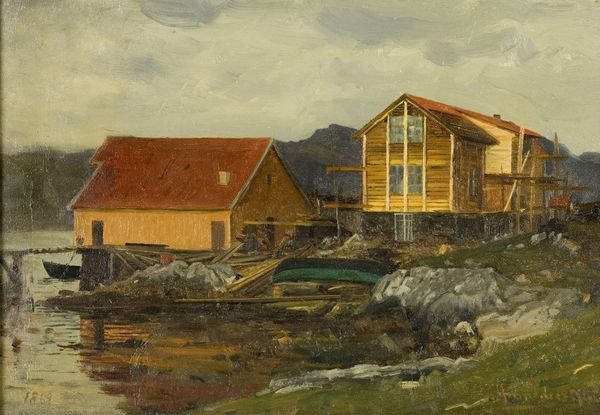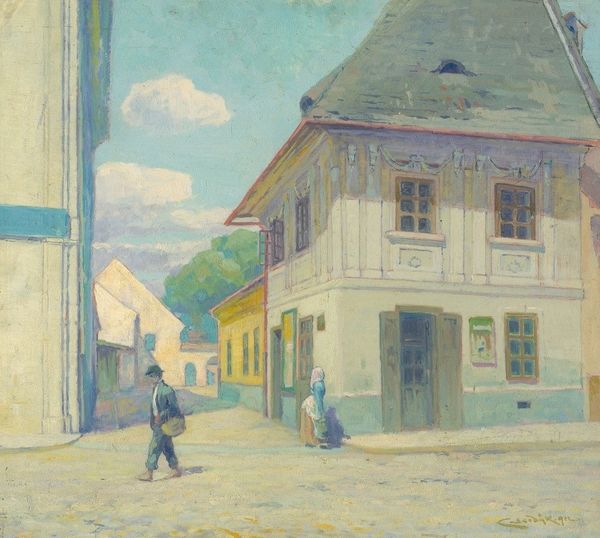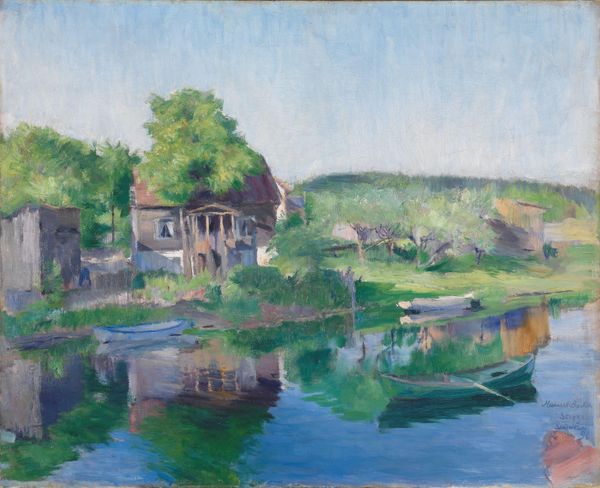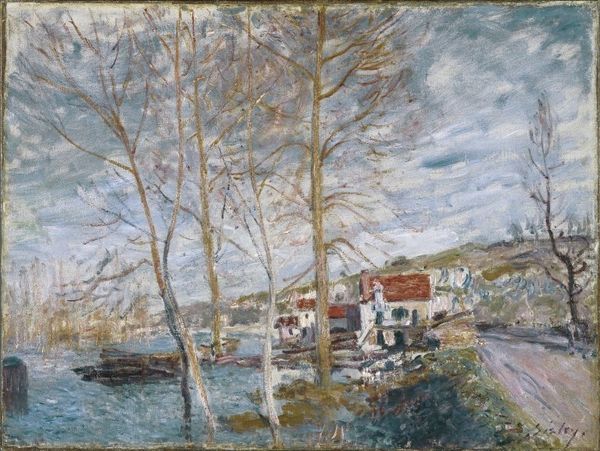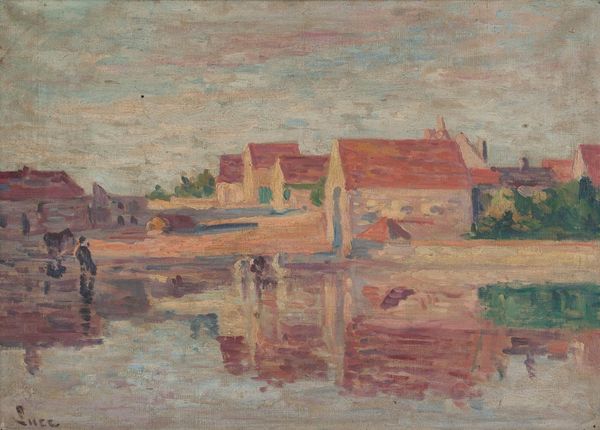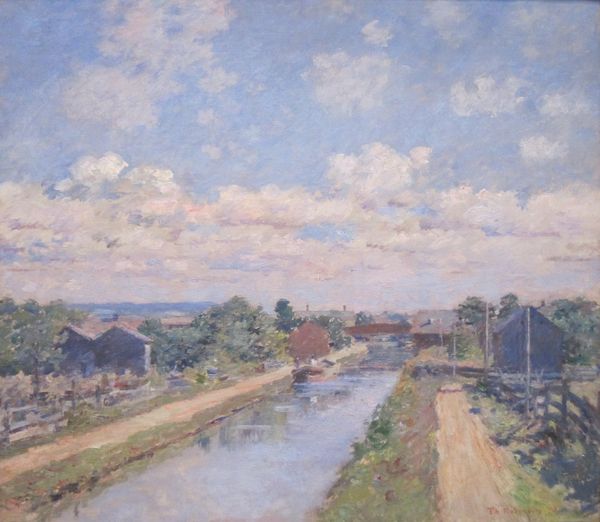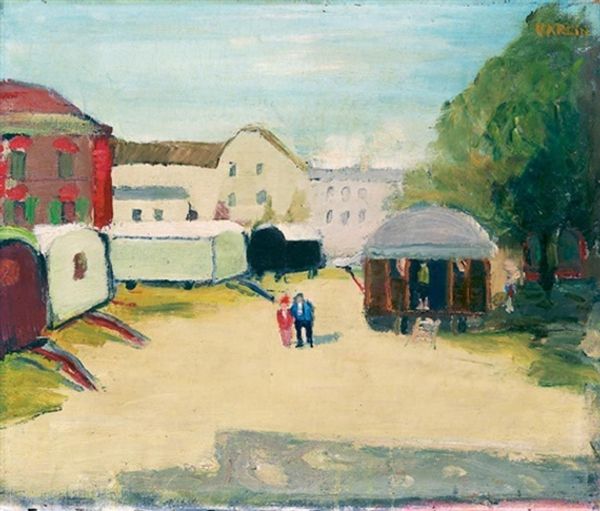
Dimensions: support: 464 x 615 mm frame: 666 x 816 x 83 mm
Copyright: CC-BY-NC-ND 4.0 DEED, Photo: Tate
Curator: Harold Gilman painted "Canal Bridge, Flekkefjord," currently held in the Tate Collections. What do you make of this piece at first glance? Editor: The composition is striking. The bridge cuts diagonally across the frame, creating a dynamic tension with the more static buildings behind it. Curator: Gilman was deeply engaged with the everyday lives of working-class communities. This scene, rendered with visible brushstrokes, offers a glimpse into the social fabric of Flekkefjord. Editor: Yes, and the textures he achieves are remarkable. The rough rendering of the bridge contrasts with the smoother surfaces of the buildings, emphasizing their materiality. It's quite lovely. Curator: Indeed. Gilman’s focus on ordinary subjects and his methods elevate the mundane, prompting us to consider the value of labor. Editor: Agreed. It's a rewarding piece. The interplay of form and texture makes it a visually compelling study.
Comments
tate 6 months ago
⋮
http://www.tate.org.uk/art/artworks/gilman-canal-bridge-flekkefjord-n03684
Join the conversation
Join millions of artists and users on Artera today and experience the ultimate creative platform.
tate 6 months ago
⋮
Flekkefjord is in Norway. It is not known why Gilman twice visited Scandinavia, in 1912 and 1913. It is possible that he went with the painter William Ratcliffe, who had family there. The visits were effectively working expeditions, and Gilman made many studies of towns and scenery. This bridge is painted accurately, but it is likely that Gilman chose the subject thinking of van Gogh's painting of a similar bridge in Provence. Gilman at first rejected Van Gogh's style, but later he came to admire him deeply. His friend Wyndham Lewis recalled that he had a number of Van Gogh postcards on his walls, and when he painted a picture that particularly pleased him, he would hang it next to them. Gallery label, August 2004
